Sporadic Meteors
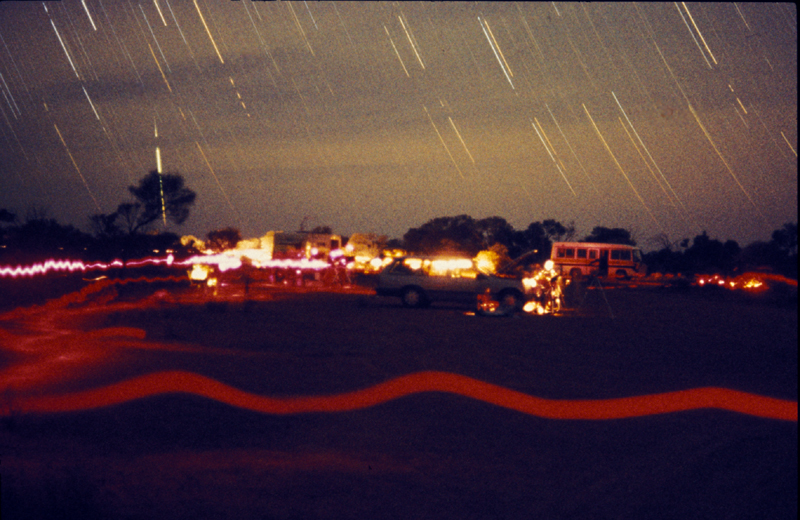
A bright sproadic meteor drops unnoticed towards the horizon, captured only by chance during a long startrail photograph.
3 hour exposure, 3M 1000 slide film.
50mm f/2 Nikkormat lens. April 8, 1986.
The above photograph shows one of the problems of observing during an astrocamp. This was the first time I had visited Meeline Station. It was 1986, and a large group had journeyed there to observe comet Halley for almost 2 weeks. Unfortunately, many were not astronomers, and this was most evident by the continued use of white lights!!!!!!
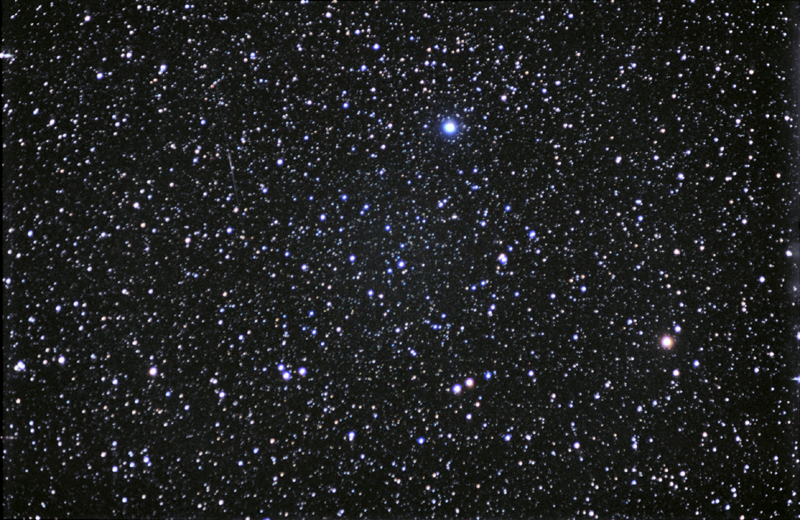
A faint sporadic meteor passes through the southern constellation Grus.
30 minutes exposure, Kodak Royal Gold 400 film.
50mm f/2 Nikkormat lens. May 5, 1998.
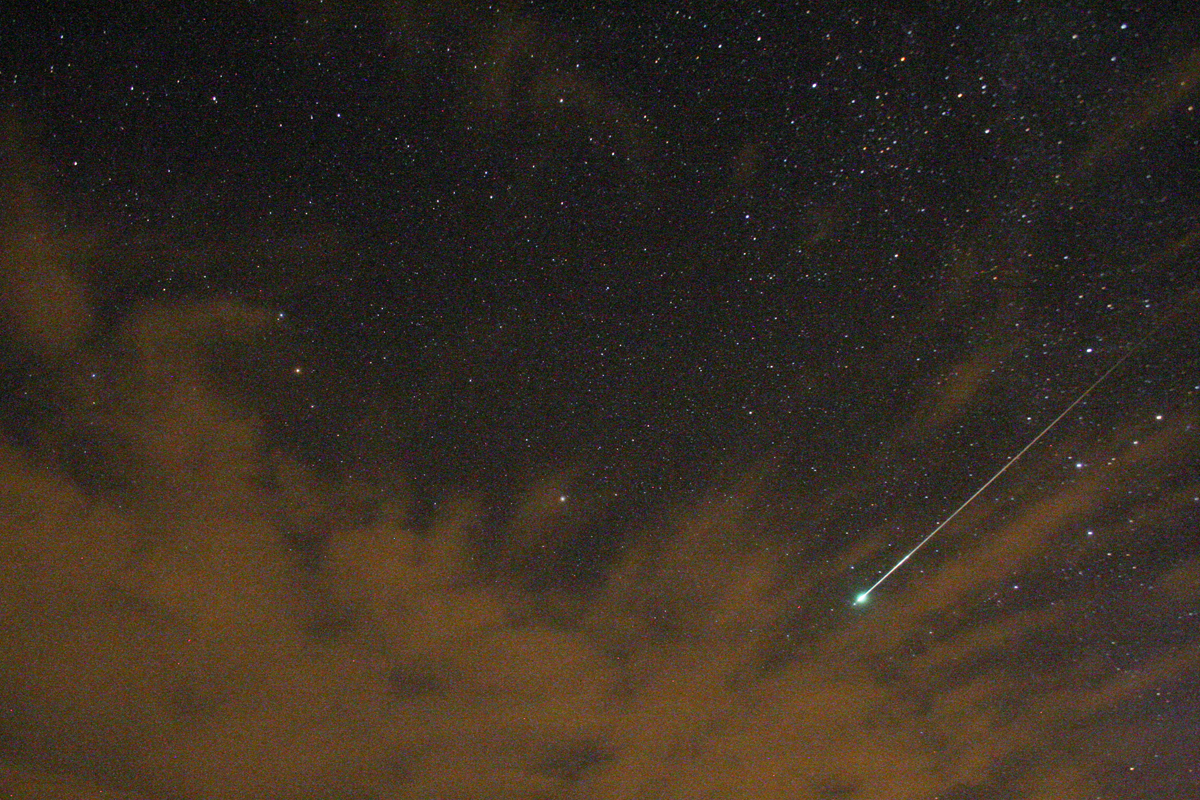
A bright sproadic meteor explodes with a green flash between Casseopia and Polaris.
2 minute exposure. Canon DSLR 55mm f/3.5 lens. 13 August, 2010.
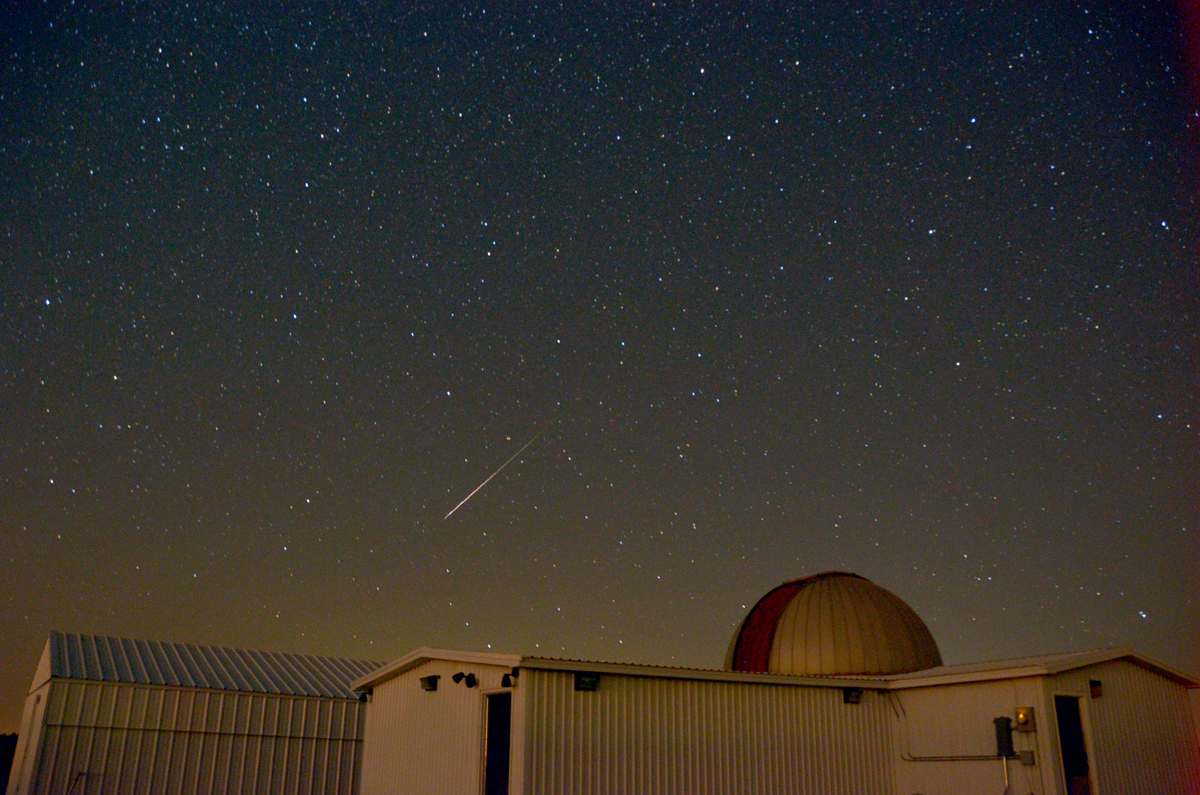
A bright sproadic meteor flies through Hercules close to M13.
30 seconds exposure. Canon DSLR 55mm f/3.5 lens. 5 August, 2013.
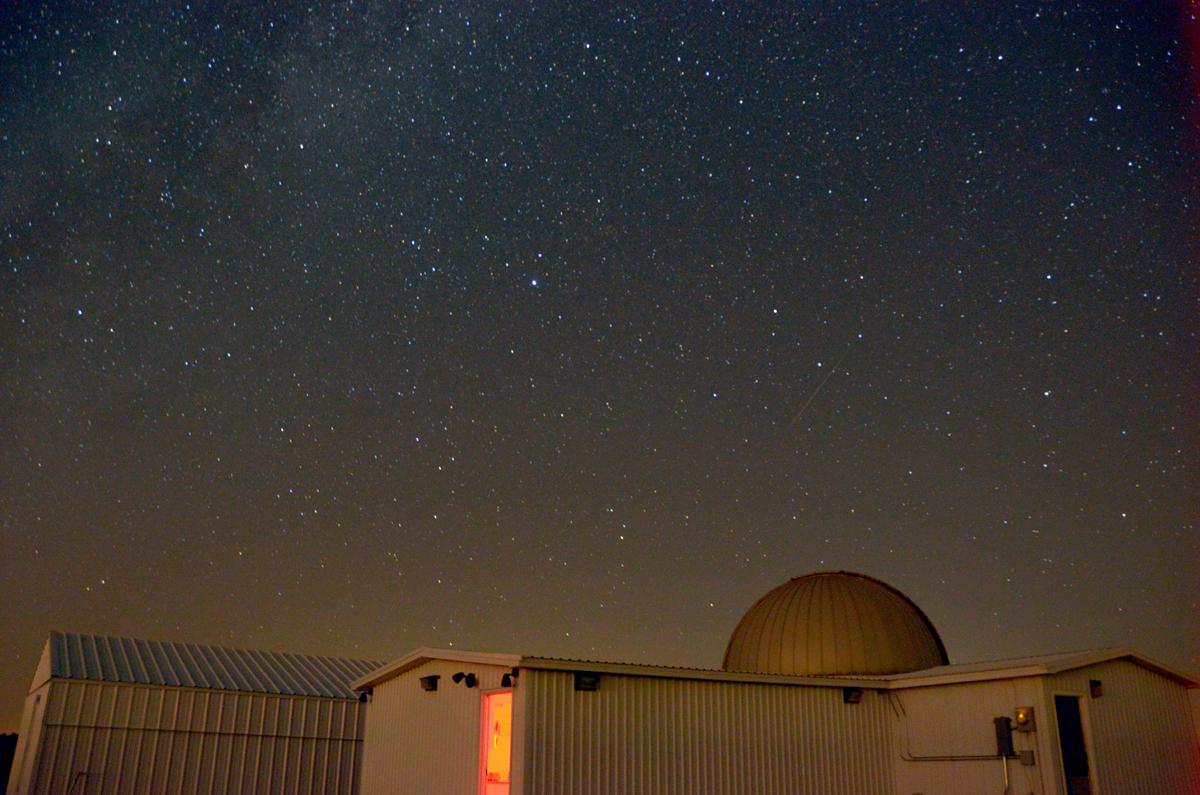
A faint sproadic meteor passes through the head or Draco.
30 seconds exposure. Canon DSLR 55mm f/3.5 lens. 5 August, 2013.
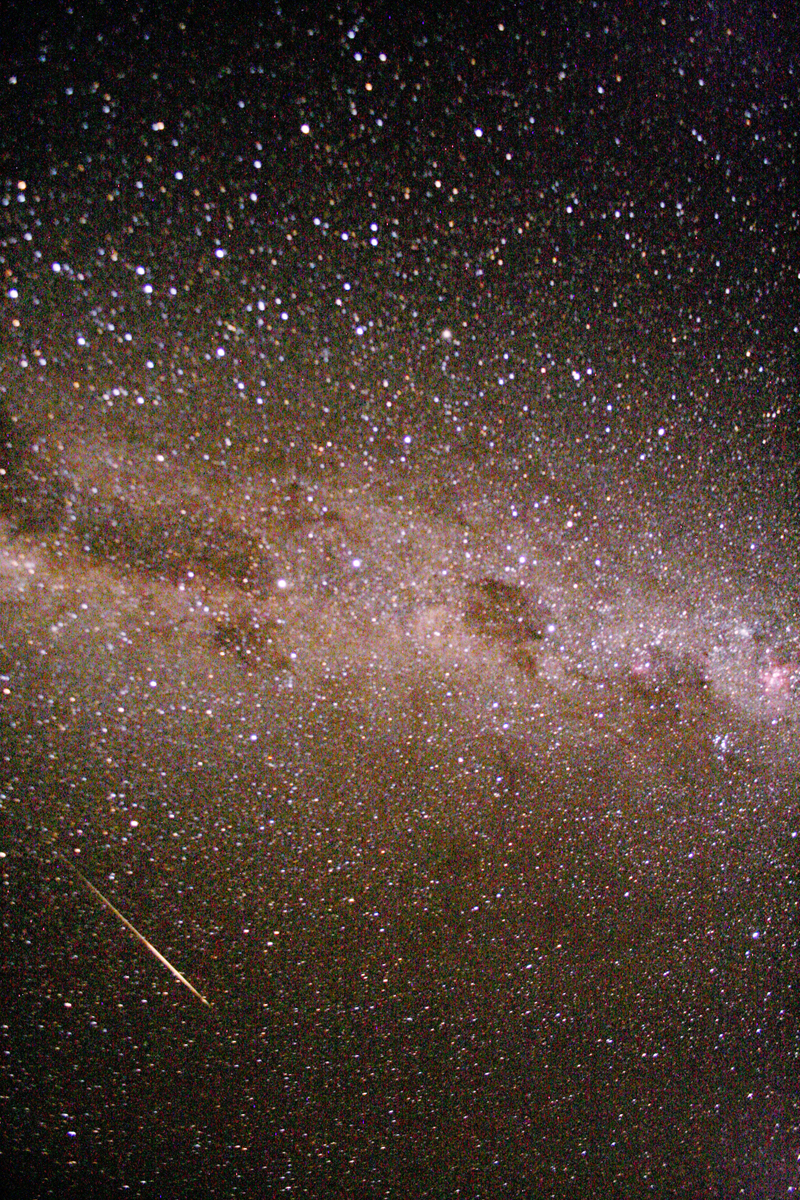
A bright sporadic meteor passes through the southern skies below the Southern Cross.
30 seconds exposure. Modified Canon 350D DSLR 55mm f/3.5 lens. 16 June, 2014.
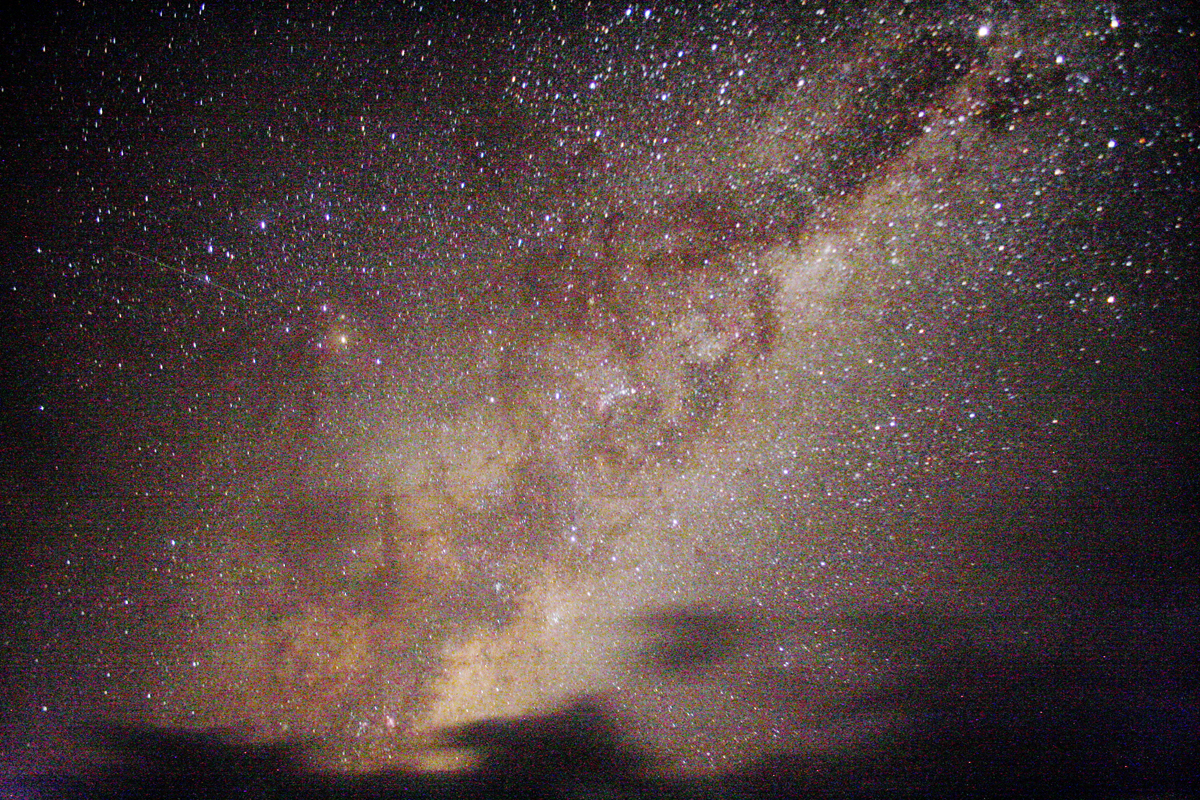
A bright sporadic meteor flies away from Antares.
30 seconds exposure. Modified Canon 350D DSLR 55mm f/3.5 lens. 18 June, 2014.
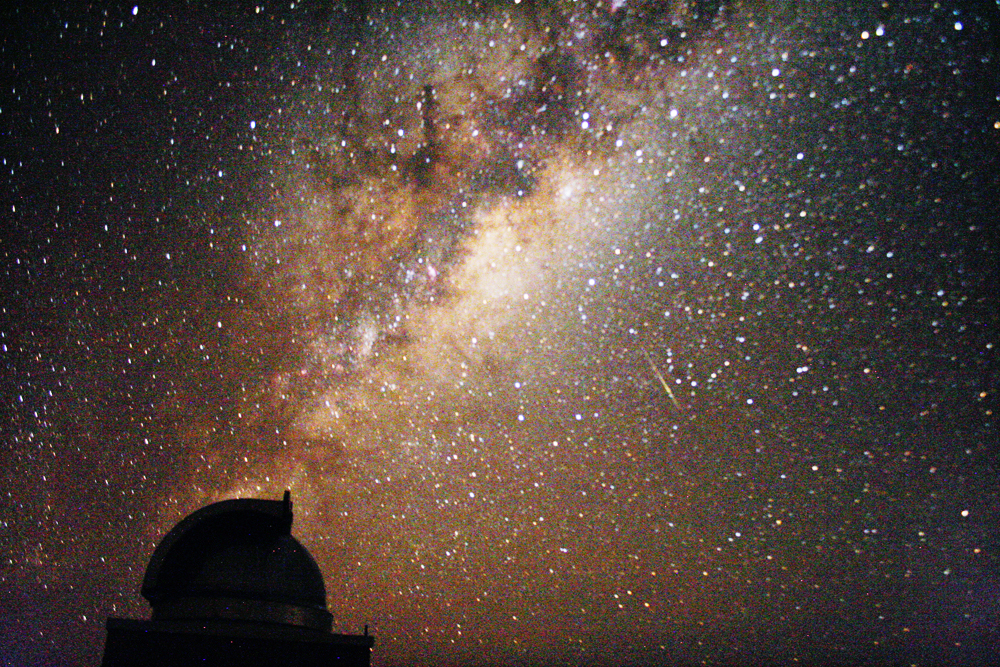
A bright sporadic meteor flies pas Corona Australis.
30 seconds exposure. Modified Canon 350D DSLR 55mm f/3.5 lens. 22 June, 2014.
On February 21, 1999, while observing at the Chiro observatory with Sweedish deep-sky affectionado, Timo Karhula, we observed a very slow moving fireball that passed completely across the sky, disappearing over the eastern horizon. From the brightness and the speed, we expected that this was satellite re-entry. A few months later, Timo emailed me with the details about which satellite we had observed. It was a booster for the Soyuz-TM 29.

The path of the Soyuz-TM 29 booster observed to during re-entry into the Earth's atmosphere.
February 21, 1999.









